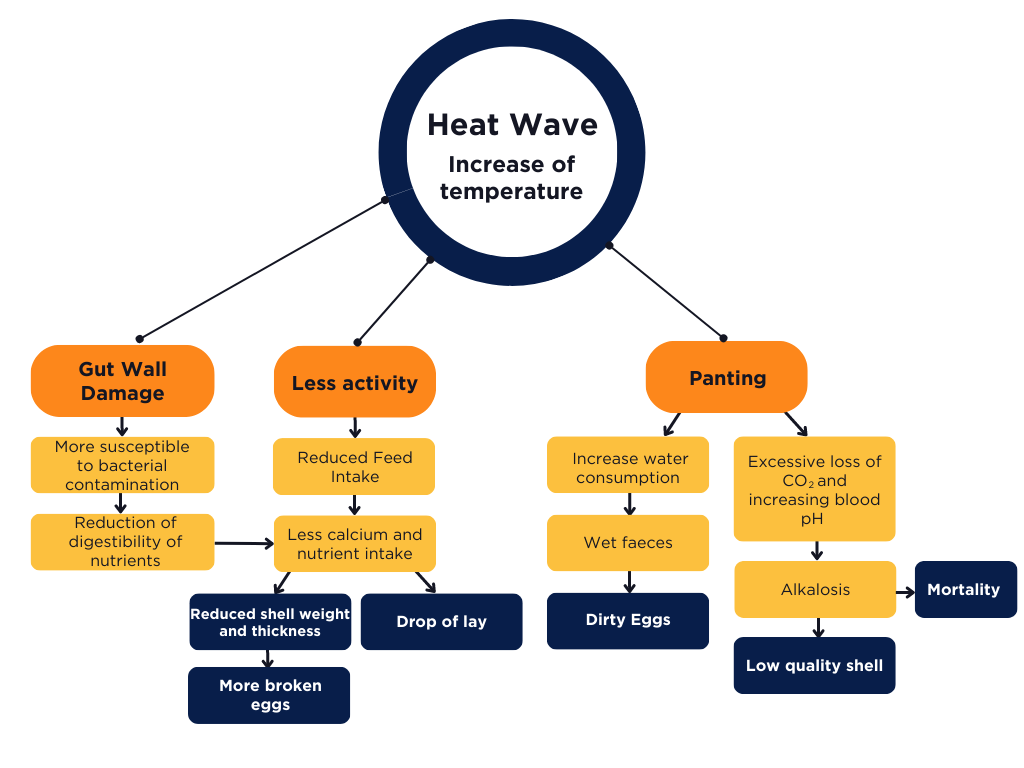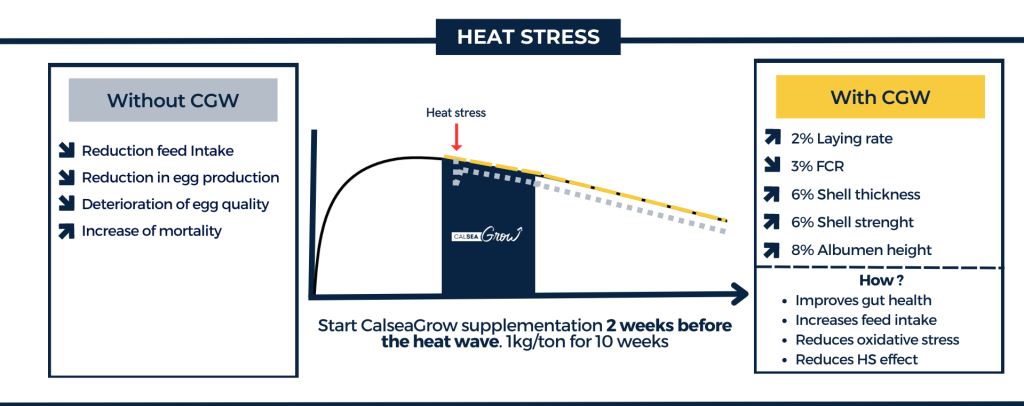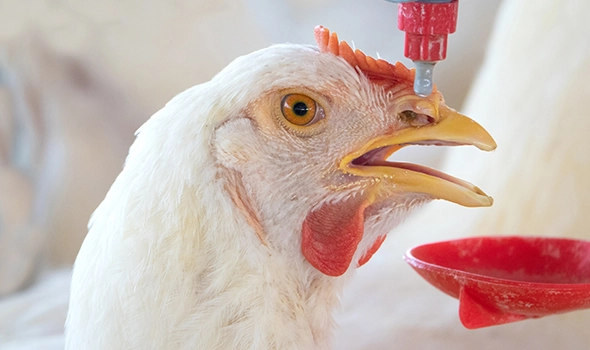Heat stress can represent a pressing concern during the summer season. With temperatures frequently above 30 degrees surpassing the 25 degrees comfort range for a poultry, the physiological challenges become more pronounced.
What is heat stress in poultry?
Heat stress in poultry refers to a condition where they are exposed to high temperatures and humidity levels that exceed their physiological tolerance. It occurs when the bird is unable to dissipate the heat leading to various changes in the behavior of the poultry. The impact on productivity is high, this is why preventing it, is mandatory.
To evaluate the level of heat stress, the Temperature Humidity Index (THI) is commonly used. It is a numerical value to measure the combined effect of temperature and humidity on the thermal comfort and stress levels of poultry. A higher THI value indicates a greater risk of heat stress (Habeeb, 2018).
For example, a temperature of 28°C with a Humidity Level of 95 % has the same THI level as a temperature of 38 degrees with a 20% humidity.
What are the consequences of heat stress in poultry?
The bird resort to panting in order to dissipate heat from their body, by opening their mouth, their feathers and wings, often leading to a decrease in feed intake and nutrient absorption. This hyperventilation leads to low CO2 levels in blood and an increase of the blood pH. To compensate it, the bird degrades part of the bones to obtain carbonates and restore the blood levels. This process results in a decrease of calcium storage in the bones, which is necessary for eggshell formation during laying period. This process can lead to decrease in calcium storage of medullary bone, essential to eggshell formation (30 to 40%) during laying period. Consequently, we can observe declines in egg size, shell quality, shell color and broken eggs more frequent (Soriano, 2021).

How can we support animals and maintain their natural physiological processes during heat stress?
The strategy to avoid maximum issues caused by heat stress should be a combination of:
- Management measures: proper density and lighting, implementation of ventilation systems and roofing sprinklers, monitorization of feed and water intake and control of the water supply and its temperature.
- Formulation assessment: good balance and digestibility of the diet, calcium incorporation rate and form. For example, the addition of fat instead of carbohydrates in the formulation may reduce the production of heat and increase palatability.
- Time adjustment: feeding at the cooler time of the day is ideal to optimize the feed intake. Manipulation of the poultries should also be during those hours.
These security and prevention measures are the first steps to reduce the impact of the heat stress (Wasti, 2020).

How CALSEAGROW can help poultry under heat stress condition?
To mitigate heat stress, Phosphea created a unique blend of Peptic-oligosaccharides prebiotics and antioxidants specifically designed for layers and breeders. Due to its specific synergy between marine calcium and citrus extract, CALSEAGROW provides prebiotic (POS) and antioxidant properties to the bird leading to better calcium mobilization for the bones and eggshell and control of oxidative stress caused by Heat Stress. By incorporating CALSEAGROW at 1kg/ton of feed into their diet it is possible to enhance calcium deposition in both bones and eggshell increasing the shell quality of the egg.
Additionally, this innovative approach reduces the oxidative stress, improves feed intake during stress by increasing the nutrient absorption. It maintains and promotes gut health, which contribute to sustain egg production. Our recommendation is: Supplement CALSEAGROW 2 weeks before the heat wave, in order to help counteract the negative effects of heat stress.

To know more :
For more information, don’t hesitate to contact our technical team


